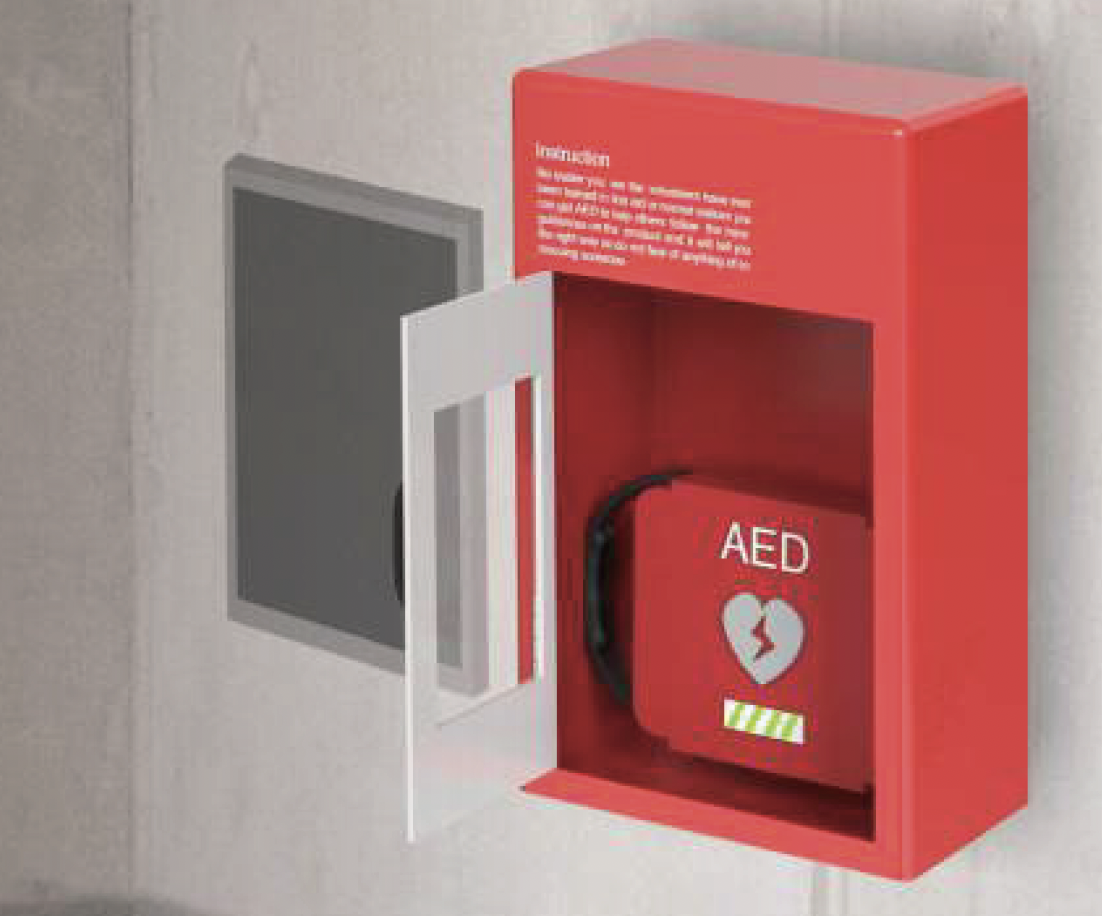
EMERGENCY HEART
TYPE
Product Design
UIUX Design
Service Design
OVERVIEW
designer
Elaine Zeng
Haoran Liu
Despite calls to 120, many cardiac arrest victims perish before arrival. The critical "Golden 4 Minutes" before hospitalization significantly enhances survival chances. This project streamlines pre-hospital emergency response for cardiac arrest incidents, maximizing the potential to save lives.
problem
The pressing need for a versatile rescue system arises from the prevalence of cardiac arrest as a significant societal issue, requiring solutions adaptable to varied environments, encompassing semi-closed and open settings.
design objectives
Design a rescue system that is accessible and usable in various environments, including semi-closed and open settings, to ensure widespread applicability.
Develop a system that enables prompt response to cardiac arrest incidents, minimizing the "Golden 4 Minutes" delay and maximizing the chances of survival.
Provide training and educational resources for users, including rescuers, bystanders, and healthcare professionals, to ensure proper use of the rescue system and optimize outcomes
high-fidelity design
The interface is designed specifically for backend operators, aiming to provide precise location functionality to locate individuals in need of assistance and to monitor the situation in real-time to ensure safety. The interface design utilizes an intuitive map display combined with clear information indicators, enabling operators to quickly and accurately locate and respond to emergency situations. Additionally, the interface design includes a concise and clear control panel, facilitating rapid execution of related operations by operators to improve rescue efficiency and response speed.
PRODUCT DESIGN & IMPROVEMENT
This rescue device is designed based on the existing AED, providing user instructions and an added layer of usability assurance, allowing both trained volunteers and ordinary individuals to easily operate it in emergency situations.
BLUEPRINT
When someone collapses suddenly, passersby can contact the control center by scanning nearby emergency codes. Upon confirmation of the incident by control center staff, dispatch and monitoring of the emergency response immediately commence. In each location where this dispatch system is installed, there is a warning screen next to each AED and signage indicating the location of AEDs to remind people of emergency measures. This allows for the participation of emergency personnel, security personnel, and bystanders in the rescue operation, thereby improving the efficiency of emergency response within the golden four minutes and ensuring the safety of the patient.


